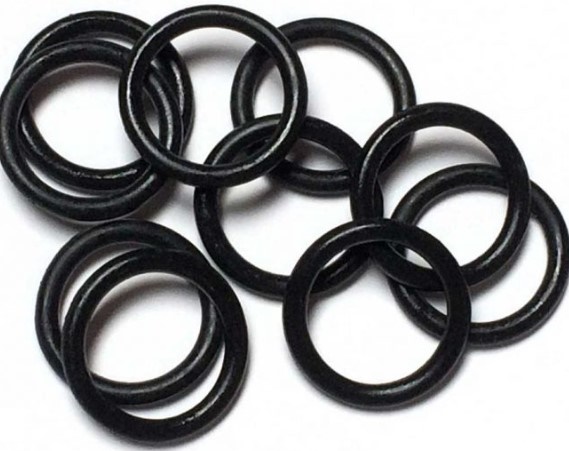The different Types of Fluoroelastomers
Fluoroelastomers combine excellent chemical resistance (e.g., oxidizing acids and alkalis) and high-temperature resistance (i.e., up to 275–300°C for short periods); excellent oxidation resistance; good resistance to fuels containing up to 30% aromatics; mostly poor resistance in solvents or organic media by contrast with fluorinated plastics.

Viton® fluoroelastomers. There are three major general-use families of Viton fluoroelastomer: A, B, and F. They differ primarily in their resistance to fluids and, in particular, aggressive lubricating oils and oxygenated fuels, such as methanol and ethanol automotive fuel blends. A full range of Viton® grades accommodates various manufacturing processes, including transfer and injection molding, extrusion, compression molding, and calendering. There is also a class of high-performance Viton® grades such as GB, GBL, GF, GLT, and GFLT.
Viton®A is a family of fluoroelastomer dipolymers; they are polymerized from two monomers, vinylidene fluoride (VF2) and hexafluoropropylene (HFP). Viton®A fluoroelastomers are general-purpose types suited for general molded goods such as o-rings and v-rings, gaskets, and other simple and complex shapes.
Viton®B is a family of fluoroelastomer terpolymers; that is, they are polymerized from three monomers: vinylidene (VF2), hexafluoropropylene (HFP), and tetrafluoroethylene (TFE). Viton®B fluoroelastomers offer better fluid resistance than A-type fluoroelastomers.
Viton®F is a family of fluoroelastomer terpolymers; that is, they are polymerized from three monomers: vinyl fluoride (VF2), hexafluoropropylene (HFP), and tetrafluoroethylene (TFE). Viton®F fluoroelastomers offer the best fluid resistance of all Viton types. F types are particularly useful in applications requiring resistance to fuel permeation.
Viton®GBL is a family of fluoroelastomer terpolymers; that is, they are polymerized from three monomers: vinyl fluoride (VF2), hexafluoropropylene (HFP), and tetrafluoroethylene (TFE). Viton GBL uses peroxide cure chemistry, resulting in superior resistance to steam, acid, and aggressive engine oils.
Viton®GLT is a fluoroelastomer designed to retain the high heat and the chemical resistance of general-use grades of Viton fluoroelastomer while improving the low-temperature flexibility of the material. Viton GLT shows a glass transition temperature of 8–12°C lower than general-use Viton grades.
Viton®GFLT is a fluoroelastomer designed to retain the high heat and the superior chemical resistance of the GF high-performance types while improving the low-temperature performance of the material. Viton GFLT shows a glass transition temperature of 6–10°C lower than general-use Viton grades.


